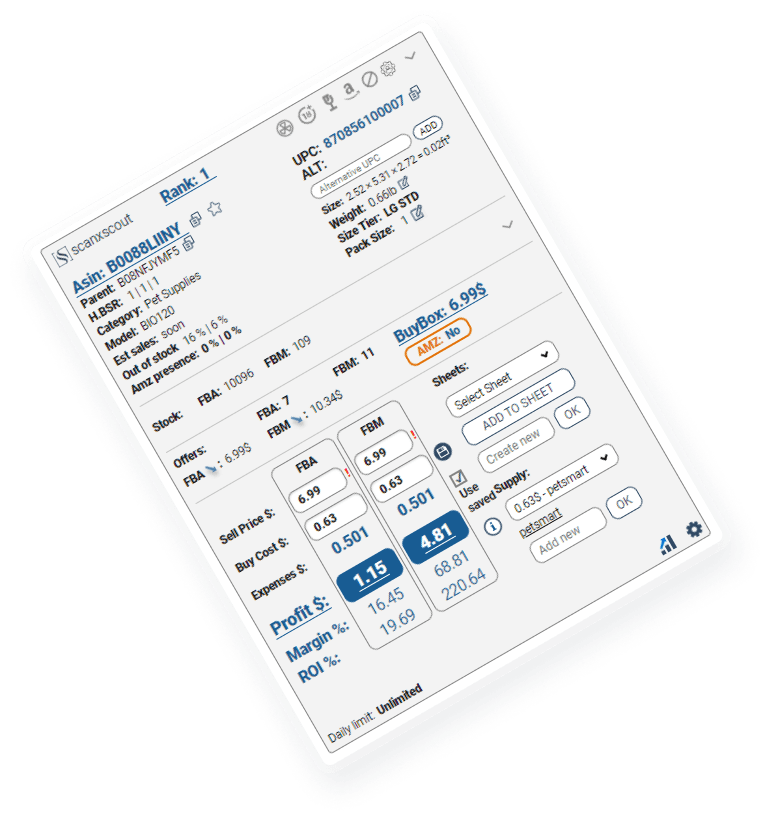In the competitive world of Amazon selling, conducting effective product research is crucial for success. By thoroughly understanding market trends, customer preferences, and competitor strategies, Amazon sellers can make informed decisions about which products to sell and how to position themselves in the marketplace. In this article, we will explore the process of product research on Amazon and delve into the reasons why it is essential for every Amazon seller.
1. Introduction to Amazon Product Research
Amazon product research involves analyzing various factors to identify profitable product opportunities and validate their viability in the marketplace. It goes beyond simply finding products with high demand and low competition. A comprehensive research process considers factors such as product quality, pricing, customer reviews, brand reputation, and potential profitability.
2. Identifying Target Market and Niche
The first step in product research is identifying your target market and niche. By understanding the demographics, interests, and preferences of your potential customers, you can narrow down your product selection and tailor your marketing efforts effectively. Tools like Amazon’s Best Sellers Rank, Google Trends, and social media platforms can provide valuable insights into popular product categories and emerging trends.
3. Keyword Research
Keyword research plays a vital role in optimizing your product listing for better visibility on Amazon. By identifying relevant keywords and incorporating them into your product titles, descriptions, and backend search terms, you increase your chances of appearing in search results when customers are looking for products similar to yours. Utilize tools like Google Keyword Planner, SEMrush, or Helium 10 to discover high-volume and low-competition keywords specific to your product.
4. Evaluating Competitor Analysis
Analyzing your competitors is crucial to gain a competitive advantage on Amazon. Study successful sellers within your niche to understand their strategies, product offerings, pricing, customer reviews, and brand positioning. Identify gaps or areas of improvement that you can leverage to differentiate your products and provide a unique value proposition to customers.
5. Assessing Product Demand and Profitability
Before finalizing a product to sell on Amazon, it is vital to assess its demand and profitability. Utilize tools like Jungle Scout, Viral Launch, or AMZScout to gather data on sales volume, average selling price, and revenue estimates for potential products. Additionally, analyze the product’s seasonality, trends, and potential for long-term sustainability to ensure a profitable venture.
6. Validating Product Viability
Once you have identified a potential product, it is crucial to validate its viability before investing time and resources. Consider ordering samples to assess the product’s quality, durability, and potential issues. Seek feedback from potential customers or conduct surveys to gauge their interest and preferences. By validating the product’s viability, you minimize the risk of investing in products that may not meet customer expectations.
7. Building a Strong Brand
A strong brand presence is essential for long-term success on Amazon. Develop a unique brand identity, including a memorable brand name, logo, and compelling product packaging. Build a brand story that resonates with your target audience and communicates the value and benefits of your products. Establishing a reputable brand enhances customer trust and loyalty, leading to increased sales and positive reviews.
8. Optimizing Product Listing
To maximize visibility and conversions, optimize your product listing with relevant keywords, persuasive product descriptions, high-quality images, and informative bullet points. Use concise and engaging language to highlight the key features, benefits, and USPs (Unique Selling Points) ofyour product. Ensure that your product listing is easy to read and navigate, providing a seamless shopping experience for potential customers.
9. Monitoring and Adjusting Strategies
Product research is an ongoing process, and it is essential to continuously monitor market trends, customer feedback, and competitor activities. Stay updated with changes in Amazon’s algorithms, policies, and advertising opportunities. Regularly analyze your product performance, sales data, and customer reviews to identify areas for improvement and adjust your strategies accordingly. By staying proactive and adaptable, you can stay ahead of the competition and optimize your sales potential.
10. Conclusion
In conclusion, conducting thorough product research is a fundamental step for any Amazon seller looking to succeed in the marketplace. By understanding your target market, conducting keyword research, analyzing competitors, and validating product viability, you can make informed decisions that lead to profitable product selection and positioning. Additionally, building a strong brand presence and optimizing your product listing further enhance your chances of success on Amazon. Remember, effective product research is an ongoing process that requires continuous monitoring and adjustments to stay ahead in the ever-evolving e-commerce landscape.
By investing time and effort into product research, Amazon sellers can significantly improve their chances of outranking competitors and achieving long-term success on the platform. So, start your product research journey today and unlock the potential for growth and profitability on Amazon.


 627
627